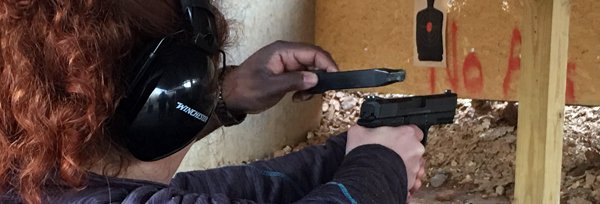Assistant Instructor Training
Do we really need training just to assist?
In our opinion, yes. Being an assistant instructor (“A.I.”) is a very important, consequential job that involves lots of nuance, social fluency, discretion, quick decision-making, and attention to detail. It’s not always a glamorous role, but the stakes are very high if assistant instructors are “winging it.” And yet, there’s a surprising lack of training opportunities for A.I.s to hone their skills. CSA has developed a curriculum to help fill this need.

Many people enjoy the limelight of being a lead firearms instructor, teaching at the front of a classroom and giving commands on the firing line. Equally important but less often recognized is the role of the assistant instructor. Being an effective assistant trainer requires more than just standing behind a row of shooters or loitering in the back of the classroom. How do you handle a nervous student? Or a student who doesn’t follow directions? Or one who is unsafe, chatty, inattentive, physically compromised, or just plain terrified? What is the assistant instructor’s role, and how is it different from the lead instructor, or the range safety officer, or the one-on-one coach? In this class, the CSA crew explores some useful tips, skills, and best practices that elevate the A.I. from just another person on the range to an indispensable part of the training team.
CSA’s Assistant Instructor training is specifically tailored to sharpen those skills that are unique to optimizing the A.I.’s role in the classroom and on the range. The A.I.’s ultimate goals are (1) making the lead trainer’s job easier and (2) making the students welcome, comfortable, and safe (all of which facilitates learning and retention). Our A.I. training is primarily geared towards rendering effective assistance to new shooters and introductory to mid-level classes. Topics include:
- Defining the AI’s role (distinguished from the lead trainer, co-trainers, coaches, and RSOs)
- Safety, safety, safety (classroom and range)
- The Four Cs (communication, choreography, coverage, and control)
- Checking your ego
- Anticipating (and avoiding) problems before they arise
- Effective, efficient communication techniques (trainer-to-trainer, and trainer-to-student)
- Managing distractions and delays
- Administering written examinations (literacy and language issues, etc.)
- Document management and data entry (liability waivers, registration forms, emergency contacts, privacy issues, etc.)
- Medical precautions and emergency procedures
- Effective spatial management (positioning, blocking, alignment, environmental accommodations)
- Reinforcing students’ proprioception and kinesthetic awareness
- Enforcing (and helping students habituate) safety rules – especially muzzle and trigger finger discipline
- Firing line ingress and egress for hot and cold ranges
- Firing line management (lane assignment factors, target placement, gear staging, etc.)
- Managing shooters of different ages, maturity levels, motivations, and backgrounds
- Managing physical limitations, psychological roadblocks
- Appropriate types and amounts of individual coaching
- Reinforcing the lead trainer’s range commands
- Intercepting errant firearms (as distinct from adversarial disarms)
- And much more!
CSA’s Assistant Instructor training is required for all staff and volunteers who assist with any of our classes. We also offer this curriculum at conferences and to the general public. The training consists of several modules that can be taught separately or in combination. Please see the previous section for a list of topics covered.
- A.I.s in the Classroom
- A.I.s on the Range: Simulated Drills
- A.I.s on the Range: Live Fire Drills
- A.I. Full Package


